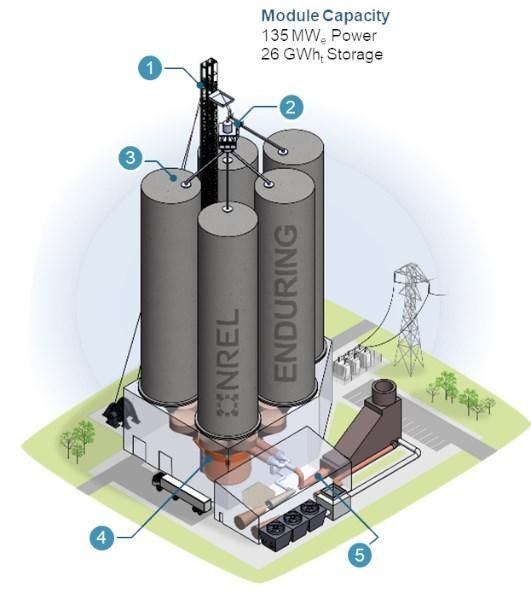The invisible fallout of thermal power plant closures on local economies – Mongabay-India

Report on the Socio-Economic and Environmental Impacts of the Talcher Thermal Power Plant Closure
Executive Summary
The closure of the 460-MW Talcher Thermal Power Station (TTPS) in Odisha, India, in March 2021, serves as a critical case study on the challenges of executing a just energy transition in alignment with the Sustainable Development Goals (SDGs). The event triggered severe economic disruption for the local community, particularly the informal sector, and exposed significant gaps in strategic planning for mitigating social and environmental vulnerabilities. This report analyzes the consequences of the closure through the lens of key SDGs, including SDG 1 (No Poverty), SDG 3 (Good Health and Well-being), SDG 8 (Decent Work and Economic Growth), and SDG 11 (Sustainable Cities and Communities).
1. Economic Dislocation and Setbacks to SDG 1 and SDG 8
The shutdown of the TTPS led to a direct and immediate collapse of the local economy, which was heavily dependent on the plant’s workforce. This outcome represents a significant challenge to achieving SDG 8 (Decent Work and Economic Growth) and has pushed vulnerable populations closer to poverty, undermining SDG 1 (No Poverty).
1.1. Impact on Local Enterprises
- Approximately 120 shops and small businesses in markets adjacent to the plant ceased operations due to the loss of their primary customer base.
- Shopkeepers experienced catastrophic income loss. For example, Nrupati Jena’s daily business revenue fell from ₹4,000 to less than half that amount.
- Many displaced entrepreneurs were forced into precarious alternative livelihoods, such as subsistence farming or irregular manual labor, with significantly lower and less stable incomes. Biswanath Behera, a former repair shop owner, now earns as little as ₹200 per day as a kitchen helper, compared to ₹500 previously.
1.2. Employment and Livelihood Transition
- While permanent NTPC employees were transferred, 879 contractual workers initially lost their jobs, highlighting the vulnerability of non-permanent staff in industrial transitions.
- Although a majority of contractual workers were later reinstated for the construction of a new plant, the informal economy supporting them was given no consideration or support, demonstrating a failure to ensure inclusive economic growth as mandated by SDG 8.
2. Environmental Degradation and Public Health Crisis: Contravening SDG 3 and SDG 11
Decades of industrial activity have inflicted a severe environmental toll on Talcher, creating conditions that are in direct opposition to the aims of SDG 3 (Good Health and Well-being) and SDG 11 (Sustainable Cities and Communities).
2.1. Pollution and Health Burden
- Talcher is officially categorized as a “critically polluted region” by India’s Central Pollution Control Board.
- Air pollution is cited as the second-largest risk factor for premature deaths in Odisha, leading to a high prevalence of respiratory illnesses (asthma, tuberculosis) and ischaemic heart disease.
- The continued reliance on coal, with a new 1320 MW plant under construction, indicates a failure to prioritize public health and create a safe, sustainable urban environment as per SDG 11.
3. A Flawed Energy Transition and Its Implications for SDG 7 and SDG 13
The decision to replace an old thermal power plant with a new, larger one, rather than diversifying the local economy or investing in renewables, represents a missed opportunity for a genuine green transition and poses challenges to SDG 7 (Affordable and Clean Energy) and SDG 13 (Climate Action).
3.1. Lack of Strategic Diversification
- Experts note that the transition plan focused solely on a “coal-to-coal” model, failing to explore alternative industries that could provide sustainable livelihoods and build economic resilience.
- The lack of a long-term strategy, despite NTPC’s intention to retire the plant being known as early as 2017, prevented the development of a post-coal future for the local economy.
- This approach contradicts the principles of building resilient infrastructure (SDG 9) and taking urgent action to combat climate change (SDG 13).
4. Governance Failures and the Need for an Inclusive Just Transition
The experience in Talcher underscores a systemic failure in governance and stakeholder engagement, which is essential for achieving a just transition that reduces inequality (SDG 10) and builds strong institutions (SDG 16).
4.1. Exclusion of Vulnerable Communities
- The transition dialogue was described by experts as “elitist,” focusing on technical and corporate aspects while ignoring the communities directly impacted.
- There was no institutional mechanism to support the informal sector, such as shopkeepers, who suffered immense “collateral damage.”
- NTPC has acknowledged the closure as a “valuable learning experience,” citing the need for early stakeholder engagement, re-skilling programs, and collaboration with state agencies in future projects.
4.2. Recommendations for Future Transitions
To align future industrial closures with the SDGs, the following actions are critical:
- Develop comprehensive transition plans at least a decade in advance of any planned closure.
- Ensure primary stakeholders, including local communities and informal workers, are central to the planning process.
- Prioritize economic diversification and investment in green industries to create sustainable livelihoods and promote SDG 8.
- Integrate public health and environmental remediation plans (SDG 3 and SDG 11) into all transition strategies.
SDGs, Targets, and Indicators in the Article
1. Which SDGs are addressed or connected to the issues highlighted in the article?
-
SDG 1: No Poverty
The article directly addresses the economic fallout from the thermal power plant’s closure, which has pushed local business owners and workers towards poverty. The collapse of the local market has destroyed livelihoods and drastically reduced incomes, highlighting the community’s economic vulnerability.
-
SDG 3: Good Health and Well-being
The article highlights the severe health consequences of long-term industrial pollution in Talcher. It explicitly mentions that the town is a “critically polluted region” and links the pollution to a high “disease burden,” including respiratory diseases, heart conditions, and premature deaths, directly connecting industrial activity to public health outcomes.
-
SDG 7: Affordable and Clean Energy
The closure of an old, inefficient thermal power plant is discussed within the broader context of India’s energy transition and its goal of reaching net-zero emissions by 2070. However, the article also points out the complexity of this transition, as the old plant is being replaced by a new, larger coal-fired plant, not a clean energy source.
-
SDG 8: Decent Work and Economic Growth
This is a central theme of the article. The closure led to mass job losses for contractual workers and the destruction of the local informal economy that depended on the plant. The article critiques the lack of a “just transition” plan, which should ensure decent work and sustainable economic alternatives for affected communities.
-
SDG 9: Industry, Innovation, and Infrastructure
The article discusses the decommissioning of obsolete industrial infrastructure (the old power plant) and the development of new infrastructure. It also raises the issue of sustainable industrialization, arguing that the transition is a “missed opportunity” for “industrial diversification” beyond coal.
-
SDG 11: Sustainable Cities and Communities
The environmental degradation of the town of Talcher is a key issue. The article notes its poor air quality, worse than Delhi’s at times, and its official classification as a “critically polluted region.” This directly relates to the goal of making human settlements safe, resilient, and environmentally sustainable.
-
SDG 13: Climate Action
The decision to close a coal-fired power plant is framed as part of India’s larger climate strategy to meet its “net-zero target by 2070.” The article explores the socio-economic challenges of implementing such climate actions on the ground.
2. What specific targets under those SDGs can be identified based on the article’s content?
-
SDG 1: No Poverty
- Target 1.5: Build the resilience of the poor and those in vulnerable situations and reduce their exposure and vulnerability to economic, social and environmental shocks and disasters. The article shows a failure to meet this target, as the plant closure acted as an economic shock from which the local community, particularly shopkeepers, had no support or resilience plan to fall back on. The article states, “Nobody has asked us how we are surviving.”
-
SDG 3: Good Health and Well-being
- Target 3.9: By 2030, substantially reduce the number of deaths and illnesses from hazardous chemicals and air, water and soil pollution and contamination. The article directly relates to this target by describing Talcher’s air pollution as the “second-largest risk factor responsible for premature deaths in Odisha” and a cause of “ischaemic heart disease” and “respiratory diseases ranging from asthma to tuberculosis.”
-
SDG 7: Affordable and Clean Energy
- Target 7.2: By 2030, increase substantially the share of renewable energy in the global energy mix. The article discusses India’s efforts to build “its renewable capacity,” which provides the context for closing old fossil fuel plants. However, the replacement of the Talcher plant with another coal plant shows the challenges in achieving this target.
-
SDG 8: Decent Work and Economic Growth
- Target 8.2: Achieve higher levels of economic productivity through diversification and technological upgrading. The article points to a failure in this area, quoting an expert who calls the “transition from coal to coal” a “missed opportunity” for “post-closure industrial diversification.”
- Target 8.5: By 2030, achieve full and productive employment and decent work for all. The closure led to 879 contractual workers losing their jobs and the collapse of approximately 120 shops, directly impacting employment and decent work in the region.
-
SDG 9: Industry, Innovation, and Infrastructure
- Target 9.4: By 2030, upgrade infrastructure and retrofit industries to make them sustainable. The closure of the 1967 plant due to “poor efficiency, and overall obsolete technology” is an example of upgrading infrastructure. The lack of a socially sustainable plan for the transition, however, is a major criticism.
-
SDG 11: Sustainable Cities and Communities
- Target 11.6: By 2030, reduce the adverse per capita environmental impact of cities, including by paying special attention to air quality. The article’s description of Talcher’s air quality being “poorer than Delhi’s on occasion” and its categorization as a “critically polluted region” directly addresses the concerns of this target.
-
SDG 13: Climate Action
- Target 13.2: Integrate climate change measures into national policies, strategies and planning. The closure of the thermal plant is part of India’s national strategy to achieve its “net-zero target by 2070,” demonstrating the integration of climate goals into energy policy, even if the local implementation is flawed.
3. Are there any indicators mentioned or implied in the article that can be used to measure progress towards the identified targets?
-
Indicators for SDG 1 & 8 (Poverty & Decent Work)
- Change in Daily Income: The article provides specific figures, such as Nrupati Jena’s daily business dropping from “₹4,000” to “less than half,” and Biswanath Behera’s earnings falling from “₹500 a day” to “as little as ₹200.” This serves as a direct measure of economic impact.
- Number of Job Losses: The article explicitly states that the closure led to “879 contractual workers losing their jobs.” This is a quantitative indicator of unemployment.
- Number of Affected Businesses: The “invisible collateral damage was the approximately 120 shops in the two nearby market areas.” This indicates the impact on small-scale enterprises.
-
Indicators for SDG 3 & 11 (Health & Sustainable Communities)
- Air Quality Assessment: The classification of Talcher as a “critically polluted region” by India’s Central Pollution Control Board is a formal indicator of environmental quality. The comparison of its air quality to that of Delhi provides a relative measure.
- Prevalence of Pollution-Related Diseases: The article mentions that “respiratory diseases ranging from asthma to tuberculosis are common” and cites air pollution as a major risk factor for “ischaemic heart disease” and “premature deaths.” This implies health data can be used as an indicator.
-
Indicators for SDG 7 & 9 (Energy & Industry)
- Energy Generation Capacity: The article specifies the capacity of the closed plant (“460-MW”) and the new plant (“1320 MW capacity”). This data is an indicator of the scale of energy infrastructure and its reliance on fossil fuels.
- Industrial Diversification: The lack of new industries beyond coal is an implied negative indicator. The mention of state plans to set up industries in “steel, iron… food and beverage, agro-processing, tourism” suggests that the number and type of new industries established could be a future indicator of progress.
4. Summary Table of SDGs, Targets, and Indicators
| SDGs | Targets | Indicators Identified in the Article |
|---|---|---|
| SDG 1: No Poverty | 1.5: Build resilience of the poor and reduce vulnerability to economic shocks. | Drastic reduction in daily income for shopkeepers (e.g., from ₹4,000 to less than half). |
| SDG 3: Good Health and Well-being | 3.9: Substantially reduce deaths and illnesses from air pollution. | High prevalence of respiratory diseases (asthma, tuberculosis); air pollution cited as the “second-largest risk factor responsible for premature deaths.” |
| SDG 7: Affordable and Clean Energy | 7.2: Increase the share of renewable energy. | Closure of a 460-MW old coal plant as part of a national transition, though it is being replaced by a larger 1320-MW coal plant. |
| SDG 8: Decent Work and Economic Growth | 8.5: Achieve full and productive employment and decent work. | Specific number of job losses (879 contractual workers); collapse of local businesses (approx. 120 shops). |
| SDG 9: Industry, Innovation and Infrastructure | 9.4: Upgrade infrastructure and retrofit industries to make them sustainable. | Decommissioning of an obsolete plant from 1967; criticism of the lack of “industrial diversification” away from coal. |
| SDG 11: Sustainable Cities and Communities | 11.6: Reduce the adverse per capita environmental impact of cities, focusing on air quality. | Classification of Talcher as a “critically polluted region”; air quality described as “poorer than Delhi’s on occasion.” |
| SDG 13: Climate Action | 13.2: Integrate climate change measures into national policies and planning. | Plant closure is framed within India’s national strategy to achieve a “net-zero target by 2070.” |
Source: india.mongabay.com
What is Your Reaction?
 Like
0
Like
0
 Dislike
0
Dislike
0
 Love
0
Love
0
 Funny
0
Funny
0
 Angry
0
Angry
0
 Sad
0
Sad
0
 Wow
0
Wow
0



















































.jpg.webp?itok=0ZsAnae9#)

























